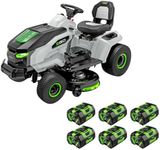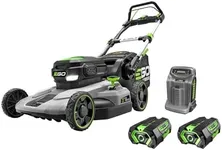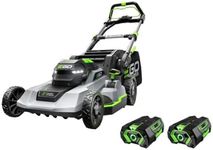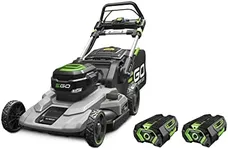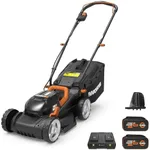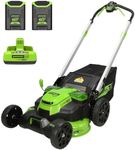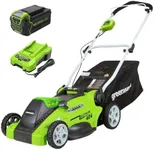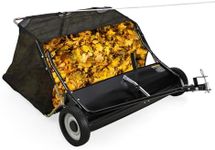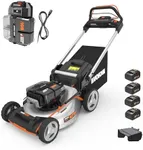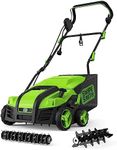Buying Guide for the Best Electric Lawnmowers
Choosing the right electric lawnmower can make your lawn care routine much easier and more efficient. Electric lawnmowers are known for being environmentally friendly, quieter, and easier to maintain compared to their gas counterparts. When selecting an electric lawnmower, it's important to consider several key specifications to ensure you pick the best fit for your needs. Here are the key specs you should focus on and how to navigate them.Power SourceElectric lawnmowers can be corded or cordless. Corded mowers are powered by plugging into an electrical outlet, which means you have a constant power supply but are limited by the length of the cord. Cordless mowers run on rechargeable batteries, offering more mobility but limited by battery life. If you have a small to medium-sized yard and don't mind managing a cord, a corded mower might be suitable. For larger yards or if you prefer more freedom of movement, a cordless mower is a better choice.
Cutting WidthThe cutting width refers to the width of the mower's blade and determines how much grass the mower can cut in a single pass. Cutting widths typically range from about 14 inches to 21 inches. A wider cutting width means you can mow your lawn faster, which is ideal for larger yards. However, if you have a smaller yard with tight spaces or lots of obstacles, a narrower cutting width might be more maneuverable and easier to handle.
Battery Life and Charging TimeFor cordless electric lawnmowers, battery life and charging time are crucial factors. Battery life indicates how long the mower can operate on a single charge, while charging time tells you how long it takes to recharge the battery. Longer battery life is beneficial for larger lawns, as it allows you to mow without frequent interruptions. Faster charging times are convenient if you need to recharge quickly between mowing sessions. Consider your lawn size and how often you mow to determine the right balance between battery life and charging time.
Cutting Height AdjustmentCutting height adjustment allows you to change the height at which the mower cuts the grass. This feature is important for maintaining a healthy lawn, as different grass types and seasons may require different cutting heights. Most electric mowers offer multiple height settings, typically ranging from 1 to 4 inches. If you want more control over your lawn's appearance and health, look for a mower with easy-to-adjust height settings and a wide range of options.
Grass Management OptionsElectric lawnmowers can handle grass clippings in different ways: bagging, mulching, or side discharge. Bagging collects clippings in a bag for easy disposal, which is great for a clean lawn but requires frequent emptying. Mulching finely chops the clippings and returns them to the lawn, providing natural fertilization. Side discharge ejects clippings out the side, which can be useful for quickly clearing large areas. Consider how you prefer to manage grass clippings and choose a mower that offers the desired option or multiple options for versatility.
Weight and ManeuverabilityThe weight and maneuverability of an electric lawnmower affect how easy it is to push and navigate around your yard. Lighter mowers are easier to handle, especially in smaller yards with tight corners and obstacles. Heavier mowers might offer more stability and cutting power, which can be beneficial for larger or uneven lawns. Consider your physical strength and the layout of your yard when choosing a mower with the right balance of weight and maneuverability.
Noise LevelElectric lawnmowers are generally quieter than gas-powered models, but noise levels can still vary. If you live in a neighborhood with noise restrictions or prefer a quieter mowing experience, look for models that are specifically designed to operate more quietly. Noise levels are usually measured in decibels (dB), and lower numbers indicate quieter operation. Consider your sensitivity to noise and the preferences of those around you when selecting a mower with an appropriate noise level.

